#dr douglas ong
Text

sorry for getting fixated on some brothers in a show that's about brothers. as if it's my fault.
#the venture bros#venture bros#wide whale#dr. dugong#douglas ong#chester ong#dr douglas ong#i got chester's head proportions SO wrong cos like#the thing is that hes huge but has a normal head#thats my bad but this was my first time drawing him#and i havent drawn traditionally in a long time so i have gotten out of the habit of measuring so much since#u can resize when y draw digital#so thats on me. thats on me#NEXT TIME!!!#man i get so emotional abt siblings.#this is gonna get like one like tops and im fine with that. THIS IS FOR MEEEEEE
27 notes
·
View notes
Text
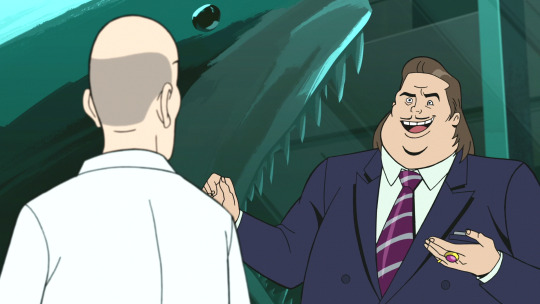


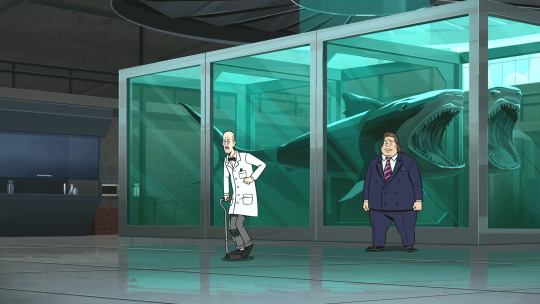
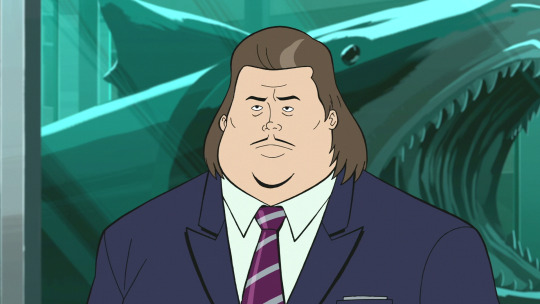
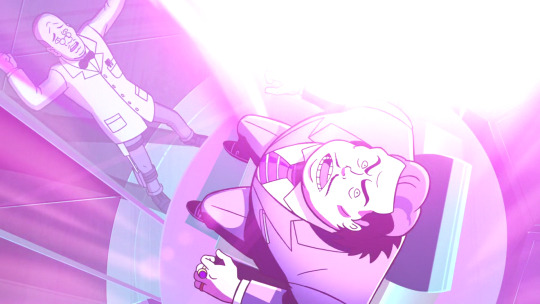


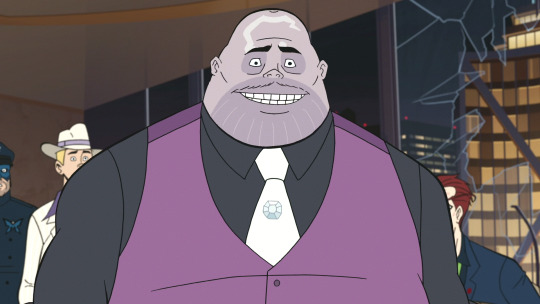
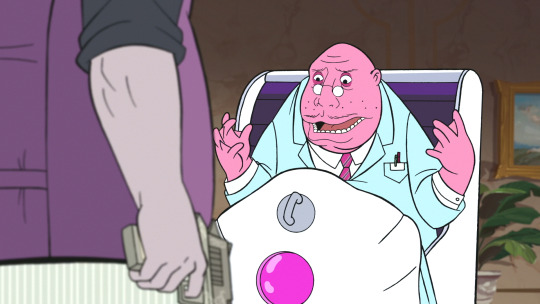
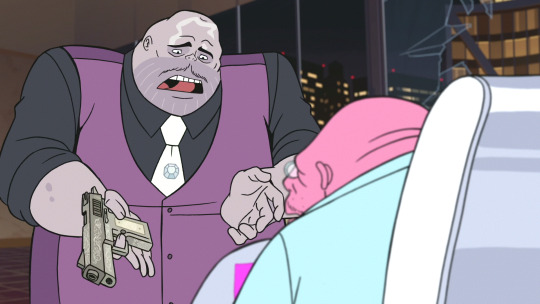
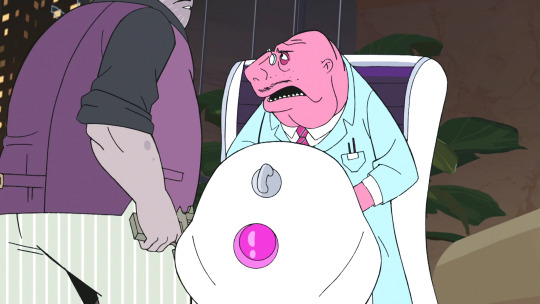

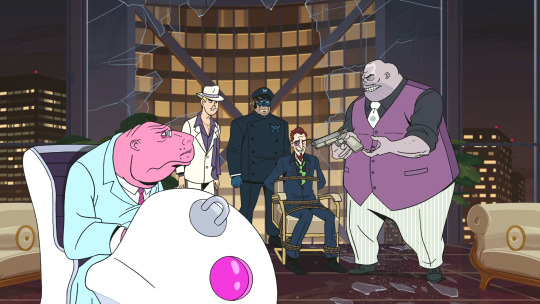
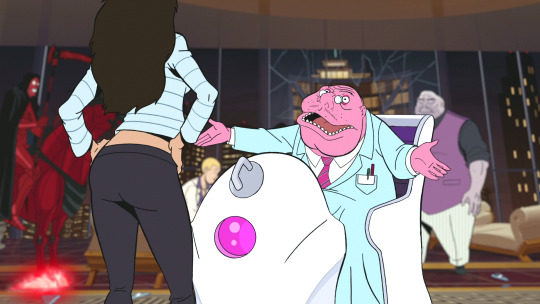

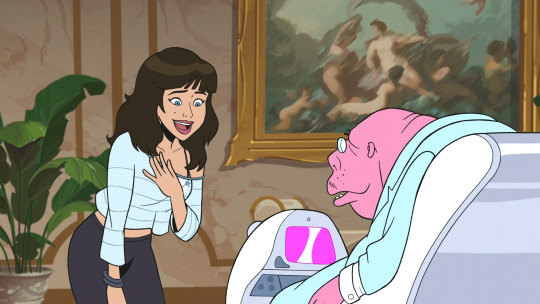

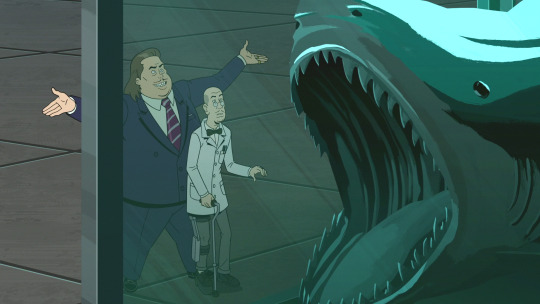

venture bros? wrong. ong bros blast
#kirbco brand cola#venture bros#sirena ong#wide whale#dr dugong#douglas ong#chester ong#<- has anyone ever gone in that tag. i haven't even gone in there#lmk lets hang#my vbros tag
15 notes
·
View notes
Photo
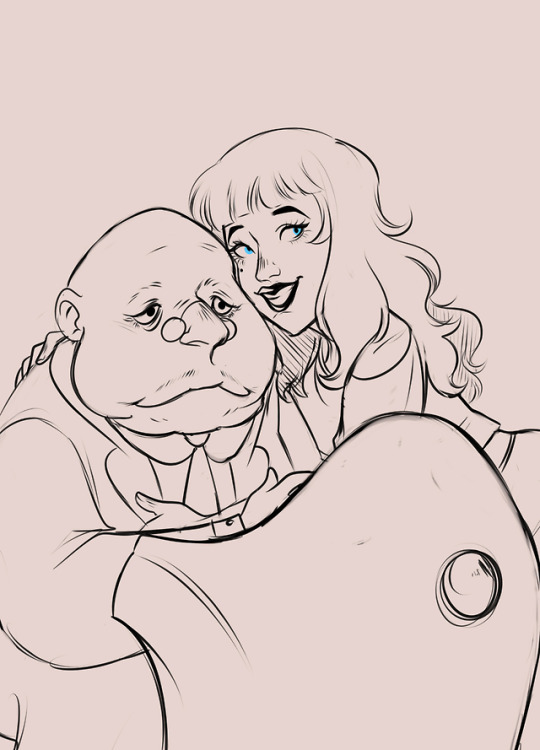
her reaction to meeting him was so cute, she’s so cute!!!
#my new art tag#venture bros#sirena ong#douglas ong#dr dugong#also since hes not fuckin dead i have another ocean themed scientist to love
552 notes
·
View notes
Text

10 Reasons To Love Pokémon
02:23
Dr. Mrs. The MonarchThe Venture Bros. characterFirst appearance
"The Terrible Secret of Turtle Bay"Last appearance
"The Saphrax Protocol"
Dr. Mrs. The Monarch (real name: Sheila, born 1969 or 1970) is the secondary antagonist of The Venture Bros. She was the professional sexy partner of her supervillain husband, The Monarch, and is now his boss since joining the Council of 13. Throughout the first two seasons she was known as Dr. Girlfriend, but she is now referred to as Dr. Mrs. The Monarch.
Stay up to date on your Fandom
Stay up to date on your fandom with carefully curated and timely Fandom newsletters.
SIGN UP
Incredible PC game bundle, from $10
BUY FROM FANATICAL
Dr. Mrs. The Monarch is voiced by Doc Hammer, though she was voiced by Jackson Publick in her first appearance, "The Terrible Secret of Turtle Bay", albeit as a cameo.
Background
As a young woman, Sheila attended State University and was a student of Professor Fantomas. She has a doctorate in an unnamed field, and appears proficient in mechanics and general sciences, as evidenced by her having built the Monarch's first pair of functional wings, his ill-conceived "sunshine gun", and several tracking devices used for her own purposes.
Sheila later became the super-villain known as Lady Au Pair before serving as the second-in-command to many different super-villains over the years under several names. She soon went on to work for Phantom Limb under the name Queen Etherea, at which point she first met the Monarch. After falling in love with the Monarch, she abandoned working for Phantom Limb and went on to serve as the Monarch's second-in-command, Dr. Girlfriend.
Dr. Mrs. The Monarch with her husband, the MonarchAt the start of the series, Dr. Girlfriend’s relationship with the Monarch had begun to suffer due to his vendetta against the Venture family. In hopes of trying to bridge the gap between the two sides, she convinces the Monarch to reach out to Hank and Dean Venture as a friend when Monarch confides that Dr. Venture emotionally neglects his children. Despite her efforts, the Monarch continues his vendetta against the Ventures throughout the first season, until their breakup in "The Trial of the Monarch".
In season 2, Doctor Girlfriend had gone back to working with her former lover Phantom Limb, going by Queen Etherea again. However, Phantom Limb's pompousness grated on her and she reunited with The Monarch, whom she married in "Showdown At Cremation Creek".
In the Season 3, she and her husband move into Phantom Limb's former home in the local villain community of Malice.
In the Season 4, Dr. Mrs. The Monarch continues to aid her husband. During this time she forms a friendship with Henchman 21 which leads to a kiss between them in "Assisted Suicide". It turns out in "Operation P.R.O.M." that the kiss meant nothing to her, which was a contributing factor to 21 officially breaking away from them.
In the season 5 finale, she, her husband and their sole henchman 21 (who returned to their ranks) move into the Monarch's old family home in New Jersey because Sergeant Hatred accidentally destroyed the Cocoon and their house in Malice. She is later offered a position as a member of The Council of 13, which she accepts. In "All This and Gargantua-2", The Sovereign arranges the deaths of most of the council when they refuse to participate in his plans to attack the space station Gargantua 2. She is one of the few survivors of this attack, and confronts the Sovereign in his home and asks him not to destroy Gargantua-2 because her husband is there. The Sovereign begins a self-destruct sequence at his lair, where Dr. Mrs. The Monarch is restrained and unable to free herself, but Watch and Ward arrive in time to launch the built-in escape pod (always installed right after a self-destruction button), and they escape to Meteor Majeure (saving The Monarch and 21 on the way) where Dr. Henry Killinger announces his plans to create a new council.
During Season 6, Dr. Mrs. The Monarch becomes a part of the new The Council of 13, which plans to reshape The Guild of Calamitous Intent which had suffered as a result of the previous leader's actions. During this time, she meets the villain Wide Wale, to whom she offers a position on the council and who demands that The Guild give all arching rights to Dr. Thaddeus "Rusty" Venture to him. Later on, she and the council are forced to deal with a vigilante who takes on the identity of the famous superhero (who may have been a bad guy) The Blue Morpho, who was, unbeknownst to her, her father-in-law). She and The Council later (incorrectly) believe that the new Blue Morpho is secretly Dr. Venture when in fact he is really The Monarch.
Later on, when a villain named The Wandering Spider arching Venture goes missing she and the other council members spot Dr. Venture dressed up like the Blue Morpho, which confirms their suspicions. At Wide Wale's urging, she is given a sniper rifle to shoot Venture to avenge their fallen comrades. At first, she hesitates, but finally takes the shot. However, because the Blue Morpho's jacket has a bulletproof lining, Venture survives. Dr. Mrs. The Monarch checks her phone and finds two messages: one from Wandering Spider telling her that The Blue Morpho is holding him hostage and the other from her husband torturing his new arch, Dr. Heinie, both of which occurred while they were observing (and shooting) Dr. Venture. When it seems clear that Venture was not The Blue Morpho, she reprimands the Council for pushing her to perform a pointless act of violence.
Dr. Mrs. The Monarch and her colleagues then form a truce with the OSI, and set up a trap for The Blue Morpho in which some of the OSI and villains disguise themselves as the Ventures to fight against Dr. Venture's current nemesis Red Death. When The Blue Morpho doesn't show up, Dr. Mrs. The Monarch leaves. Furious that the vigilante didn't appear, she resolves to track down and kill the man herself.
Her vow to track down and slay the Blue Morpho ultimately comes to naught, for Henchman 21 eventually divulges to her that the Monarch is the true killer and was being held by Wide Wale before asking for her help. She enlists Red Death's help (in return for a promise of a Guild Council seat without killing her husband) to break into Dummy Corp and find the location of Douglas Ong, aka Dr, Dugong, Wide Wale's brother. Dr. Dugong, was hiding under OSI protection because his brother Wide Wale was a supervillain. Dugong is reunited with Wale, who believed his brother dead at the Monarch's hands, and the Monarch escapes murder. Furthermore, the original Blue Morpho, Vendata, resurfaces and is slain in an entirely unrelated incident. Following his death, the original Blue Morpho is blamed for all the Guild villain murders, and the Monarch is freed of any suspicion. Dr. Mrs. The Monarch learns that the original Blue Morpho's was the Monarch's father.
In "The Inamorata Consequence", Dr. Mrs. The Monarch and some other Guild representatives meet with the OSI at the Treaty of Tolerance Summit II to renew the agreement on organized aggression. During the negotiations, Dr. Mrs. The Monarch maintains a somewhat more civil disposition than most of the Guild or OSI emissaries there, but when negotiations break down into squabbling she too is sucked in. It is Dr. Venture of all people who shames both sides into coming back to the table and signing the new treaty. After the summit ends, Dr. Mrs. The Monarch learns of Guild Stranger S-464's secret tryst with Agent Kimberly McManus. Dr. Mrs. The Monarch correctly recognizes Fictel's comment of S-464 having "peepee" on his belt as in not urine but "P.P.", as in the marks of the Peril Partnership. S-464 was now uncovered as a mole.
In The Bellicose Proxy, Dr. Mrs. The Monarch, with Watch and Ward's assistance, interrogates S-464 and gains his assistance as a double agent in return for helping him regain the love of McManus. Dr. Mrs. The Monarch engineers their meeting by secretly providing a level 6 ray gun to a level 1 arching, which would engender both the Guild and the OSI to intercede. When S-464 and Dr. Mrs. The Monarch encounter McManus, the latter shows only disdain and contempt for them. She expresses that she hates S-464 for his association with the Peril Partnership, calling them scum. When Dr. Mrs. The Monarch attempts to intercede, McManus's disrespect causes Dr. Mrs. The Monarch to fly off the handle even in the face of a peaceful resolution. the Monarch and Henchman 21, who had been mentoring Augustus St. Cloud during the arching encounter, intercede and break up the fight. They apologize to both McManus and S-464 before leaving them to settle their differences. Dr. Mrs. The Monarch thanks her husband for saving her life, but the Monarch says he only saved her career as she would have taken down McManus.
In "The Terminus Mandate", the conflict with the Peril Partnership seems to be coming to a head, but Dr. Mrs. The Monarch and Red Death meet with Blind Rage to discuss a peace agreement. Blind Rage loutishly demands that kickbacks formerly paid by Wide Wale be resumed, but Dr. Mrs. The Monarch only promises she will speak about it with the Guild. The Guild Council votes and ultimately agrees (though Red Death would secretly later scuttle the agreement by attacking Blind Rage and tying him to railroad tracks. After the vote to pay off the Partnership is concluded, the task of what to do about the Council's inability to fully restore itself is brought up. Dr. Mrs. The Monarch cites the Guild Charter which allows the Council to be reformed as the Guild's governing body. However, this development would require the Council members to retire from active supervillainy and become full-time Council members. Dr. Mrs. The Monarch breaks the news to the Monarch, and he reacts tempestuously before leaving for the Monarch Cave in a huff. Henchman 21 attempts to console her by saying that the Monarch isn't the type to do anything rash, but the effort is largely unhelpful.
Before their retirement, each Councilperson is given a final arching assignment to their worst foe, and Dr. Mrs. The Monarch is set up with her old nemesis Novia. For this encounter with her rival, Dr. Mrs. The Monarch assumes her old guise of Lady Au Pair and enlists the help of 21, whom dons a Moppet costume. Despite Sheila's hesitation upon sight of Novia, 21 approaches Novia, and the encounter commences. However, it is a heartfelt and emotional one as Novia and Lady Au Pair embrace. On the way home from the encounter, Dr. Mrs. The Monarch expresses doubts to 21 about the future of her partnership with the Monarch. At 21's behest, she cuts off his ponytail as a symbol of the change he's undergone in the past year. In addition, Dr. Mrs. The Monarch presents 21 with Novia's wallet, commenting that their encounter was an arching.
When the Guild Council reconvenes, most of the present members (Wide Wale a notable exception) accept supervillainy retirement to retain their seats. But when the question is posed to Dr. Mrs. The Monarch, she hesitates. "The Terminus Mandate" ends before she gives an answer.
Later episodes seem to confirm her decision to retain her Council seat at the cost of her supervillain career. In "the Forecast Manufacturer", she is seen in Guild uniform with Dr. Z giving the Monarch and Henchman 21 orders to infiltrate the headquarters of the Creep and ultimately assassinate him. In "The Saphrax Protocol", Dr. Mrs. The Monarch participates as one of the Guild Council in the Monarch's Tenning ceremony. The Monarch at one point comments the Guild has taken away the ability to work with his wife in villainy, although they seem to still be close, judging by how Dr. Mrs. The Monarch comments how proud she is of him, calling him "sweetie".
29 notes
·
View notes
Text
The Mental Health Stigma In The Football Set-up
Schinke, Stambulova and Moore (2018) define health as a positive, mental and social wellbeing that contributes to efficient human functioning. The positive health benefits of regular exercise have been well documented, however training and competition at elite level, may increase the health risk to the athlete (Dijkstra et al. 2014). When reviewing athlete health, coaches and sport scientists tend to focus on the physical (injuries) and struggle to consider the mental or social aspects (Rice et al. 2016). Scholars such as Born (2016) explain that physical injuries draw routine and widespread research by doctors, yet a lack of information about athlete’s mental ill health exists. The dearth of information and knowledge surrounding mental health in sport, is a main reason why many young academy athletes engulf themselves in a culture of silence and fight the illness alone. This essay analyses the current stressors, barriers and solutions that elite football academies face when tackling the mental health stigma.
Mental ill health
Souter, Lewis and Serrant (2018) explain mental ill health covers a number of disorders and diagnoses that can have a huge negative impact on the sufferer. Furthermore, Mummery (2005) adds those affected with mental health may have disturbed mood, feeling of low self-worth, disturbed sleep and appetite loss, loss of interest, low energy and poor concentration. Gulliver, Griffiths and Christensen (2012) suggest that mental ill health is on the rise in sport, however the number of young elite athletes seeking help is very low. FIFAmedicalnetwork.com (2019) stated that mental disorders are rarely reported in elite football players and other top-level athletes. Many believe this is due to the stigma surrounding mental health in sport (Bauman 2016). Dr Jaques, (Director of medical services at the English institute of sport, 2019) argues that there is a degree of stigma attached to mental health, as we try to dissolve those barriers as much as we can in a system that is always striving for excellence. ‘A system that is striving for excellence’ links to the performance narrative in football academies.
Elite academy narratives
There is a traditional performance narrative embedded in football academies, where the coaching staff are seen to sacrifice athlete’s personal well-being in the pursuit of sport success (Douglas and Carless 2008). Similarly, male athletes are viewed as superhuman as the their wellbeing is continuously overlooked (Souter, Lewis and Serrant, 2018). In addition to this, Newman, Howells and Fletcher (2016) add there is a perception in sport and society that elite athletes are immune to mental ill health. However, this is not the case. According to the PFA, their network of counsellors helped 178 players who were struggling with mental ill health in 2017 (Smith, 2017) (and that’s just those who looked for help).
Many scholars including Jones (2002) believe athletes have the psychological advantage over other individuals, due to the high demands of training/competition and performance lifestyle traits. However, Mummery (2005) suggests that the physical and psychological demands placed on athletes, may make them more predisposed than the general population to mental illnesses like depression. Crocker and Graham (1995) agree, suggesting that participating in competitive sport often places the athlete under intense physical, psychological, and emotional demands that can increase the risk of stress and mental ill health. Elite athletes are also viewed to be mentally tough, as ‘mental toughness can explain how physically talented athletes become great athletes’ (Crust and Azadi, p.43, 2010). Furthermore, Kerr and sterling (2017) argue that talent development in top academies focus heavily on ‘mental toughness’ as a requirement for success. However, they go on to suggest that the strong focus on mental toughness, can in fact be a threat to athlete welfare (Kerr and sterling, 2017). Other threats to athlete welfare include the academy environment the athletes find themselves in.
The academy environment
The competitive sports-net of a football academy can create strong dominant ideologies (Adams and Kavanagh, 2018). The football academy environment has traditionally been seen as a tough, male and masculine endeavour (Magrath, 2016). Ong, McGregor and Daley (2018) explain the academy process comes at a transitional period of adolescence where young players experience significant biological, cognitive and psychosocial change. The pressure for young players to conform to masculine norms, when they are just learning to understand and manage their emotions, can lead to confusion about their identity and negative changes in their behaviour (Kimmel and Mahler, 2003). Duquin (1994) states that emotions that may negatively affect performance such as fear, pain or empathy are actively discouraged in an elite academy setting. This results in young footballers conforming to masculine norms as they worry about their social status in the team and being perceived as weak. Portraying signs of mental weakness and seeking for help is seen as a sign of weakness that holds no place in the environment (Purcell et al. 2016).
In the academy environment, achieving the dream of playing at the top end of the game are harder than ever (Green, 2009). Mills et al. (2014) present a staggering statistic from the 2012/13 season where only 35 English under 21-players made appearances in the EPL; the lowest figure since 2005. Furthermore, James (2010) expresses The Premier League and Football League say between 60% and 65% of the 700 or so scholars taken on each year are rejected at 18 (cited from Platts and Smith 2009). These statistics highlight the harsh reality of ‘breaking through’ into the first team. Finn and McKenna (2010) express that successfully transferring talented athletes from academies into first teams is not easy. So, what happens when they don’t make the step up?
Manley, Palmer and Roderick (2012) explain the role of football academies is to develop players for the first team and in failing that, generate profit through the sale of ‘marketable assets’. Put in another way, young players work their way through the ranks of an academy, to then be released if deemed not good enough, with no back up plan. This portrays an exploitation of athletes as commodities. Lindberg (2006) explains, when a player is sold, the deals are often beneficial to both parties, but in most cases the young players are seen as victims and treated virtually like cattle. The sale of players involves them being relocated like cows on a farm, living away from home and having adjust to new surroundings, which can affect a young man’s mental health massively. Those that do make it to the first team may ‘face careers that are relatively short term with the possibility of career failure, injury or rejection’ (Roderick 2006). Roderick (p.34 2003) states ‘there are approximately 50 players each season whose careers are terminated because of injury.’ Career rejection can also mean an abrupt end to the athlete’s dreams which can cause a self -alienation that ‘may accelerate to the point of serious psychological impairment’ Lide (1981 p.43). The academy environment also involves an intense lifestyle that athletes must conform to.
Academy lifestyle
The life of an academy footballer is described as a total institution where the players are conformed to the highly rationalised pattern of daily work, intense training, and social restriction (Manley et al. 2012). The ‘highly rationalised pattern of daily work’ provides little room for athlete education and welfare (Platts and Smith, 2009). Platts and Smith (2009) argue that less attention has been offered to education and welfare provisions for young players in academies. This can leave an academy player in a difficult position for an alternate future job after football, which can result in mental health issues such as depression. Young academy players are socialised into an abusive and violent workplace, where athlete welfare is compromised by the aggressive, tough, masculine, at times violent subculture that tends to surround the game (Platts and Smith 2009). This tough and violent workplace can create many health risks for a young player and cause threats to their athlete identity.
Athletic identity
Oldknow and Grant (2008) believe physical activity in a supportive group environment provides opportunity for positive social interaction that is often valued by individual. However, Kerr and Sterling (2017) believe that academies are at fault for exploiting young players lives due to the extensive sporting commitments. This involves excluding athletes from other activities and relationships, making them more vulnerable to social isolation and difficulties coping with threats to their athletic identity (Kerr and Sterling, 2017). Murphy, Petitpas and Brewer (1996) describe athletic identity as focusing on how you perceive yourself and consists of cognitive, affective, behavioural and social factors that form your athletic role. Mitchell et al. (2014) reveals that individuals who place too strong an emphasis on their athletic identity may become one-dimensional and will begin to view themselves as just a sports person. The failure of athletes identifying themselves as an individual can lead to psychological or behavioural disturbance when being unable to train because of injury or deselection (Mitchell et al. 2014).
Stressors to athlete identity
Athletes face an array of workplace stressors including public scrutiny through mainstream and social media, limited support networks due to relocation, group dynamics and risk of injury (Rice et al. 2016). The main stressor scholars have focused on is injury. Young (1993) argues that athletes who expose their body to physical activity, play whilst injured and the rehabilitate just to find themselves injured again. Roderick (2003) states the overwhelming majority of players will continue to play with pain and injury, suggesting it’s the norm. In addition, athletes dissociate themselves from their athletic identities as a self-protective response when their sport involvement is interrupted by events such as injuries (Benson et al. 2015). Goutterbarge, Frings-Dresen and Sluiter (2015) add that severe or recurrent injuries may expose athletes to mental health problems such as distress, burnout, anxiety and depression.
Academy players must learn to cope effectively with the stressors of the academy lifestyle or else their sporting performance and subjective well-being can be negatively affected (Sagar, Busch and Jowett, 2010). Another stressor athletes face is failure and in most cases the fear of failure (Sagar, Busch and Jowett, 2010). Atkinson (1964) defined fear of failure as the motive to avoid failure because one feels shame and humiliation. If athletes perceive that they will not meet the demands of sport, it is likely to endanger their chances of achieving their goals and aspirations (Sagar and Jowett, 2012). Not achieving your set goals can change the way you perceive yourself as an athlete therefore threatening your athletic identity. Furthermore, the fear of losing has been associated with a prevalence of negative psychological and physical effects to an athlete (Conroy, 2001).
Real world evidence
In 2013 a 16-year-old boy took his own life after struggling for years with mental health following his release by a premier league football academy. The coroner who overlooked the inquest into his death strongly highlighted the potential dangers of English footballs youth development system. He stated that ‘the release was a pivotal point that crushed a young boy, a young man’s life and all the dreams that go with it, I find it is the single most important factor that lead to the events.’ (Conn, 2017, thegurdian.com) The coroner speaks about the dangers of the academy system that I have highlighted throughout this essay. This tragic event is a clear indication that more needs to be done to normalise mental health and support young boys in the academy set up.
Another incident occurred in 2015 involving a young players injury and the lack of support he received. Ipswich Town FC were accused of failing to support the mental health of a former academy youngster after mishandling an injury the player sustained during his time at the club. The player aged 16 was diagnosed with lower-back complications by the club which later turned out to be two prolapsed discs. The player returned to training after being given the all clear but still felt pain in his back for the next four months. He spent a lot of time on the side-lines not being able to train or compete. This injury and time off resulted in major mental health issues as the player was unable to live his normal life. The club failed to provide an MRI scan and the full nature of the injury was not established. Six months on from the players first diagnosis, the MRI results were presented showing the incorrect diagnosis (Lovett 2019). In this case the club failed to be supportive of their own player and made his life torrid for 6 months and beyond. There are many solutions that can be put in place to ensure events like these don’t repeat themselves.
Solutions for coaches
The biggest challenge an academy coach will face is breaking the stigma surrounding mental health in football. Coaches must educate themselves and their athletes. Schinke et al. (2018) explains the importance of coaches becoming aware of the presence of subclinical and clinical medical conditions, cultivate help seeking behaviours and provide or refer athletes for evidence-based interventions. Coaches must also act as a supportive figure to athletes. Richardson, Gilbourne and Littlewood (2004) argue that the range of personal and interpersonal challenges that elite youth soccer players face suggests a need for an appropriate support mechanism withing the academy. Furthermore, Mageau and Vallerand (2003) add that coaches’ behaviours in the form of autonomy- support, provision of structure and involvement have a beneficial impact on athletes need for autonomy, competence and relatedness. Many coaches struggle to be a supportive figure for all of their athletes as they can coach over a hundred of them. Ensuring you understand your athlete’s individual needs and personality traits can help you know when to step in and speak to them. Jowett (2005) argues that a helping relationship involves an ability or desire to understand the other persons meaning and feelings, an interest without being too emotionally involved and a strong growing mutual liking, respect and trust between two people.
Conclusion
Within this essay, I began by describing mental ill health and the traditional beliefs we as a society have about male elite academy players (Douglas and Carless 2008; Souter, Lewis and Serrant,2018; Newman, Howells and Fletcher, 2016). I then explored the key stressors and barriers that young elite players face in the academy environment that can negatively affect their mental health. Research suggested the academy environment/process, the lifestyle, athletic identity, fear of failure and injury can all cause a threat to athlete’s mental health. To provide evidence of the damaging effects these stressors can have, two real life tragic events were analysed and expressed. After analysing previous research, I have concluded that the intense stressors explored in this essay can negatively affect a young man’s mental health. Furthermore, I agree with Dijkstra et al. (2014) belief that ‘training and competition at elite level, may significantly increase the health risk to the athlete.’ To prevent the risk, I have suggested that coaches and athletes should become more aware of the barriers and stressors in the academy environment. In addition, coaches should provide a supportive mechanism to help athletes who adopt a culture of silence. It is important that mental health becomes normalised and the stigma is broken in the tough, masculine environment academy players find themselves in. Despite all of this, I feel like future research should shy away from the belief that ‘exercise brings positive health benefits’ (Dijkstra et al. (2014) and instead focus more on the damaging effects the academy environment has on young players mental health.
References
Adams, A., & Kavanagh, E. (2018). Inclusive ideologies and passive performances: Exploring masculinities and attitudes toward gay peers among boys in an elite youth football academy. Journal of Gender Studies, 27(3), 313-322.
Atkinson, J.W. (1964). An introduction to motivation. Princeton, NJ: Van Nostrand.
Bauman, N. J. (2016). The stigma of mental health in athletes: are mental toughness and mental health seen as contradictory in elite sport?.
Benson, A. J., Evans, M. B., Surya, M., Martin, L. J., & Eys, M. A. (2015). Embracing athletic identity in the face of threat. Sport, Exercise, and Performance Psychology, 4(4), 303.
Born, J. (2016). National protection of student-athlete mental health: The case for federal regulation over the National Collegiate Athletic Association. Ind. LJ, 92, 1221.
Conroy, D. E. 2001. Fear of failure: An exemplar for social development research in sport. Quest, 53: 165–183. [Taylor & Francis Online], [Web of Science ®], [Google Scholar]OpenURL Nottingham Trent University
Conn,D (2017) available online at: https://www.theguardian.com/football/2017/oct/06/football-biggest-issue-boys-rejected-academies
Crocker, P. R., & Graham, T. R. (1995). Coping by competitive athletes with performance stress: Gender differences and relationships with affect. The sport psychologist, 9(3), 325-338.
Crust, L., & Azadi, K. (2010). Mental toughness and athletes' use of psychological strategies. European Journal of Sport Science, 10(1), 43-51.
Dijkstra, H. P., Pollock, N., Chakraverty, R., & Alonso, J. M. (2014). Managing the health of the elite athlete: a new integrated performance health management and coaching model. British journal of sports medicine, 48(7), 523-531.
Douglas, K., & Carless, D. (2008). Using stories in coach education. International Journal of Sports Science & Coaching, 3(1), 33-49.
Dr Jaques, Director of Medical Services at the English institute of sport (EIS) available online at: https://leadersinsport.com/perfromance/mental-health-strategy-1/
Duquin, M. E. (1994). The body snatchers and Dr. Frankenstein revisited: Social construction and deconstruction of bodies and sport. Journal of Sport and Social Issues, 18(3), 268-281.
Finn, J., & McKenna, J. (2010). Coping with academy-to-first-team transitions in elite English male team sports: The coaches' perspective. International Journal of Sports Science & Coaching, 5(2), 257-279.
Green, C. (2009). Every boy's dream: England's football future on the line. A&C Black.
Gouttebarge, V., Frings-Dresen, M. H. W., & Sluiter, J. K. (2015). Mental and psychosocial health among current and former professional footballers. Occupational medicine, 65(3), 190-196.
Gulliver, A., Griffiths, K. M., & Christensen, H. (2012). Barriers and facilitators to mental health help-seeking for young elite athletes: a qualitative study. BMC psychiatry, 12(1), 157.
James, S. (2010). England’s young footballers face final whistle, The Guardian, 12 June 2010.
Jones, G. (2002). What is this thing called mental toughness? An investigation of elite sport performers. Journal of applied sport psychology, 14(3), 205-218.
Jowett, S. (2005). The coach-athlete partnership. The psychologist, 18(7), 412-415.
Kerr, G., & Stirling, A. (2017). Issues of maltreatment in high performance athlete development: Mental toughness as a threat to athlete welfare. Routledge Handbook of Talent Identification and Development in Sport, 409-420.
Kimmel, M. S., & Mahler, M. (2003). Adolescent masculinity, homophobia, and violence: Random school shootings, 1982-2001. American behavioral scientist, 46(10), 1439-1458.
Lide, W. (1981). Forced retirement among former professional football players with short-termed careers (Doctoral dissertation, The Ohio State University).
Lindberg, K. (2006). The man who traced 442 soccer slaves. Play the Game.
Lovett,S (2019) available online at: https://www.independent.co.uk/sport/football/football-league/ipswich-town-academy-injury-depression-mental-health-a8942116.html
Mageau, G. A., & Vallerand, R. J. (2003). The coach–athlete relationship: A motivational model. Journal of sports science, 21(11), 883-904.
Magrath, R. (2016). Inclusive masculinities in contemporary football: Men in the beautiful game. Routledge.
Manley, A., Palmer, C., & Roderick, M. (2012). Disciplinary power, the oligopticon and rhizomatic surveillance in elite sports academies. Surveillance & society., 10(3/4), 303-319.
Mills, A., Butt, J., Maynard, I., & Harwood, C. (2014). Examining the development environments of elite english football academies: The players' perspective. International Journal of Sports Science & Coaching, 9(6), 1457-1472.
Mitchell, T. O., Nesti, M., Richardson, D., Midgley, A. W., Eubank, M., & Littlewood, M. (2014). Exploring athletic identity in elite-level English youth football: a cross-sectional approach. Journal of sports sciences, 32(13), 1294-1299.
Mummery, K. (2005). Essay: Depression in sport. The Lancet, 366, S36-S37.
Murphy, G. M., Petitpas, A. J., & Brewer, B. W. (1996). Identity foreclosure, athletic identity, and career maturity in intercollegiate athletes. The sport psychologist, 10(3), 239-246.
Newman, H. J., Howells, K. L., & Fletcher, D. (2016). The dark side of top level sport: an autobiographic study of depressive experiences in elite sport performers. Frontiers in Psychology, 7, 868.
Oldknow, H., & Grant, G. (2008). Does joining a football academy help mental health recovery?. Mental Health Nursing, 28(2), 8.
Ong, C. W., McGregor, P., & Daley, C. (2018). The Boy Behind the Bravado: Player advanced safety and support in a professional football academy setting. Sport and Exercise Psychology Review, 14(1).
Platts, C., & Smith, A. (2009). The education, rights and welfare of young people in professional football in England: Some implications of the white paper on sport. International Journal of Sport Policy, 1(3), 323-339.
Richardson, D., Gilbourne, D., & Littlewood, M. (2004). Developing support mechanisms for elite young players in a professional soccer academy: Creative reflections in action research. European Sport Management Quarterly, 4(4), 195-214.
Rice, S. M., Purcell, R., De Silva, S., Mawren, D., McGorry, P. D., & Parker, A. G. (2016). The mental health of elite athletes: a narrative systematic review. Sports medicine, 46(9), 1333-1353.
Roderick, M. (2003). Work, self and the transformation of identity: A sociological study of the careers of professional footballers. Leicestershire UK: University of Leicester.
Roderick, M. (2006). A very precarious profession: Uncertainty in the working lives of professional footballers. Work, employment and society, 20(2), 245-265.
Sagar, S. S., Busch, B. K., & Jowett, S. (2010). Success and failure, fear of failure, and coping responses of adolescent academy football players. Journal of Applied Sport Psychology, 22(2), 213-230.
Sagar, S. S., & Jowett, S. (2012). The Effects of Age, Gender, Sport Type and Sport Level on Athletes' Fear of Failure: Implications and Recommendations for Sport Coaches. International Journal of Coaching Science, 6(2).
Schinke, R. J., Stambulova, N. B., Si, G., & Moore, Z. (2018). International society of sport psychology position stand: Athletes’ mental health, performance, and development. International journal of sport and exercise psychology, 16(6), 622-639.
Smith,L (2017) available online at: http://thefootballstage.com/mental-health-football-young-minds-matter/
Souter, G., Lewis, R., & Serrant, L. (2018). Men, mental health and elite sport: A narrative review. Sports medicine-open, 4(1), 57.
Young, K. (1993). Violence, risk, and liability in male sports culture. Sociology of sport journal, 10(4), 373-396.
Fifamedicalnetwork.com available online at: https://www.fifamedicalnetwork.com/lessons/mental-mental-health-of-football-players/
1 note
·
View note
Text
Live do Léo 08 09 2020: Interatividade e informação.
Live do Léo 08 09 2020: Interatividade e informação.
Participe pelo chat, pelo Google Duo 74 98852-1743 e pelo Messenger do Facebook.
Terça, 08/09, às 18h:
Douglas Araújo, idealizador da ONG Sementes da Amanhã
Luna, enfermeira do PSF de Umburaninhas
Silvano Montenegro, idealizador do projeto Faça Uma Criança Sorrir
Dr. Leandro Lemos, advogado e assessor parlamentar, direto de Brasília
View On WordPress
0 notes
Text
Placenta of Attraction
In the 2004 movie, Three Extremes, Chinese actress Bai Ling raised eyebrows playing an unlicensed midwife who makes dumplings out of aborted foetus and placentas. She sold them to rich women who believed that consuming them would reverse the signs of aging.
Although Bai herself claims to be disgusted by the idea of eating placentas, there are rumors aplenty of other celebrities who do it in the hope of improving their health by regaining a youthful complexion.
Singaporean actor Andew Seow, 36, for one, has been waiting for years to get his hands in a placenta. He said “I have seen people who have taken it, and I believe it works.” He says he has heard stories that youthful looking Taiwanese actress Lin Ching-hsia, 53, was taught by her mother to “slice it and eat it with porridge”. Then there is another un-named actress, who, after giving birth, had “super skin, a super chest and a super butt” because she is known to have ateen the organ which is “full of amino acids and proteins”, he says .
Despite being vegetarian, Seow does not baulk at the thought of consuming something which, when raw, resembles a slimy, bloody liver. “A placenta”, he says, “naturally comes out with the baby, if it is not used, it is just wasted.”
Origins of Species
A placenta is an organ rich in blood vessels that develops in female mammals during pregnancy. It lines the uterine wall and partially envelops the toeus, to which it is attached by the umbilical cord. At full term, it is about 18 cm long and 5 cm thick. It is expelled during child birth, forming part of the afterbirth. Its function is to transfer oxygen and nutrients from mother to the foetus. It also releases carbon dioxide and waste from the foam through the umbilical cord to be disposed by of the mother.
Dr Peter Chew, a consultant obstetrician and gynecologist, says that although people have been talking about “frying, drying and eating placentas” for years, his patients rarely ask to keep their heads. He says: “Placenta are full of hormones, so theoretically, they should improve the complexion, even though there’s no medical evidence to support this.”
As for the possibility of dangerous side effect from consuming it, he says “there’s no harm, seeing it’s your own body’s organ.” But to be on the safe side, he recommends cooking the placenta before consumption.
Dr Douglas Ong, an obstetrician-gynecologist, says KK Women’s and Children’s Hospital (KKH) “used to have a placenta fridge which contents were sold to cosmetic companies”. KKH is unable to verify his claims but a spokesman says that if it exists, it would probably have been “a long, long time ago”. Dr Ong claims the practice stopped after ‘HIV and other viruses came on the scene’.
He is uneasy about mothers consuming their placenta, terming it “borderline cannibalism”. He says: “Women will go to great lengths for beauty but there are other ways to achieve good skin.”
Life Force
Traditional Chinese Medicine (TCM) experts claim the human placenta has been eaten by the Chinese for 2500 years.
Dr Low Chai Ling, a medical director at an established medical institution, says “the Chinese believe it contains” qi “(Chinese for life force) and use it as a remedy for a whole range of problems such as lethargy, rejuvenating aging skin and promoting breast milk production ”.
In Singapore, human placenta from China is readily available in a dried form from Chinese medical halls.
Professor Xu Yi Jun, a physician from a renovated TCM Center, prescribing consuming 2g to 3g of powdered placenta daily to increase fertility and blood circulation and to make the body more resistant to disease.
You can also find it commonly used in beauty salons in various forms. In a certain beauty salon in Mandarin Hotel Shopping Arcade, it offers a health tonic, facial essence and hair tonic said to contain human placenta. Another major spa chain touts its placenta facial that uses sheep placenta as “an alternative to Botox”.
According to a spokesperson for the Health Sciences Authority (HSA), “placenta from both human and animal origin is currently allowed in cosmetic products”. However, “dealers of eye and dental products are required to provide supporting evidence of safety”. But as facial creams and face masks are considered “low risk” products, they are not subject to HSA approval.
The Food Drug Administration (FDA) in the United States classifies animal extract from organs such as placenta as potentially dangerous.
Out of 12 doctors talked to, only two admitted to prescribing placenta extract treatments, although one does not administer injections.
While most doctors avoided commenting on placenta and its supposed cosmetic merits, five, including Dr Chua Jun Jin, a consultant plastic surgeon at Mount Elizabeth Medical Center, agree that there is not enough medical evidence to show that it works.
Comparing placenta therapy to birds’ nest and snake oil, Dr Chua says: “Some people may swear by it, but if it was such a potent ingredient, there would be people studying it in great depth.”
One doctor, who prefers to remain unnamed for fear of backlash from other doctors, admits to injecting human placenta essence by request in small quantities on the face and body. But “the patient has to bring in her own supply”. He also has not seen any adverse side effect as a result. He believes the only reason the treatment is controversial is not because it is dangerous, but because “it was not taught in medical school, but simply evolved with the practice of medicine”.
Dr Wong Yok Meng, who specializes in detoxification and preventive medicine against aging, has been prescribing human placenta treatments for the past 10 years.
Although he says he does not inject plaque, extracts directly into the body, he prescribes topical and oral human placenta extract treatments to rejuvenate the skin of his patients, most of which are female and aged above 40.
He observes that the treatment “does not get rid of wrinkles, but helps to give skin a youthful look by smoothing fine lines and increasing cell renewal.”
A month’s dosage of oral placenta extract costs around S $ 500, while a topical solution for the face costs around S $ 100. Dr Wong says he has not seen any negative effects in any of his patients.
But one concern Dr Joyce Lim, a renounced dermatologist, has with the use of placenta extract in injections and medicines is that it involves “the transmission of genetic material and may cause allergies”.
Indeed, in a case reported by Yomiuri Shubun paper last January, a Japanese woman in her 40s developed acute liver disease after being infected with human placenta essence at a Tokyo beauty center.
Perhaps, the next time before you consider consuming this unusual delicacy, do stop and think whether it is worth risking your health all in the name of beauty.
Source by Debra Tan
from Home Solutions Forev https://homesolutionsforev.com/placenta-of-attraction/
via Home Solutions on WordPress
from Home Solutions FOREV https://homesolutionsforev.tumblr.com/post/184570180160
via Tim Clymer on Wordpress
0 notes
Text
Placenta of Attraction
In the 2004 movie, Three Extremes, Chinese actress Bai Ling raised eyebrows playing an unlicensed midwife who makes dumplings out of aborted foetus and placentas. She sold them to rich women who believed that consuming them would reverse the signs of aging.
Although Bai herself claims to be disgusted by the idea of eating placentas, there are rumors aplenty of other celebrities who do it in the hope of improving their health by regaining a youthful complexion.
Singaporean actor Andew Seow, 36, for one, has been waiting for years to get his hands in a placenta. He said "I have seen people who have taken it, and I believe it works." He says he has heard stories that youthful looking Taiwanese actress Lin Ching-hsia, 53, was taught by her mother to "slice it and eat it with porridge". Then there is another un-named actress, who, after giving birth, had "super skin, a super chest and a super butt" because she is known to have ateen the organ which is "full of amino acids and proteins", he says .
Despite being vegetarian, Seow does not baulk at the thought of consuming something which, when raw, resembles a slimy, bloody liver. "A placenta", he says, "naturally comes out with the baby, if it is not used, it is just wasted."
Origins of Species
A placenta is an organ rich in blood vessels that develops in female mammals during pregnancy. It lines the uterine wall and partially envelops the toeus, to which it is attached by the umbilical cord. At full term, it is about 18 cm long and 5 cm thick. It is expelled during child birth, forming part of the afterbirth. Its function is to transfer oxygen and nutrients from mother to the foetus. It also releases carbon dioxide and waste from the foam through the umbilical cord to be disposed by of the mother.
Dr Peter Chew, a consultant obstetrician and gynecologist, says that although people have been talking about "frying, drying and eating placentas" for years, his patients rarely ask to keep their heads. He says: "Placenta are full of hormones, so theoretically, they should improve the complexion, even though there's no medical evidence to support this."
As for the possibility of dangerous side effect from consuming it, he says "there's no harm, seeing it's your own body's organ." But to be on the safe side, he recommends cooking the placenta before consumption.
Dr Douglas Ong, an obstetrician-gynecologist, says KK Women's and Children's Hospital (KKH) "used to have a placenta fridge which contents were sold to cosmetic companies". KKH is unable to verify his claims but a spokesman says that if it exists, it would probably have been "a long, long time ago". Dr Ong claims the practice stopped after 'HIV and other viruses came on the scene'.
He is uneasy about mothers consuming their placenta, terming it "borderline cannibalism". He says: "Women will go to great lengths for beauty but there are other ways to achieve good skin."
Life Force
Traditional Chinese Medicine (TCM) experts claim the human placenta has been eaten by the Chinese for 2500 years.
Dr Low Chai Ling, a medical director at an established medical institution, says "the Chinese believe it contains" qi "(Chinese for life force) and use it as a remedy for a whole range of problems such as lethargy, rejuvenating aging skin and promoting breast milk production ".
In Singapore, human placenta from China is readily available in a dried form from Chinese medical halls.
Professor Xu Yi Jun, a physician from a renovated TCM Center, prescribing consuming 2g to 3g of powdered placenta daily to increase fertility and blood circulation and to make the body more resistant to disease.
You can also find it commonly used in beauty salons in various forms. In a certain beauty salon in Mandarin Hotel Shopping Arcade, it offers a health tonic, facial essence and hair tonic said to contain human placenta. Another major spa chain touts its placenta facial that uses sheep placenta as "an alternative to Botox".
According to a spokesperson for the Health Sciences Authority (HSA), "placenta from both human and animal origin is currently allowed in cosmetic products". However, "dealers of eye and dental products are required to provide supporting evidence of safety". But as facial creams and face masks are considered "low risk" products, they are not subject to HSA approval.
The Food Drug Administration (FDA) in the United States classifies animal extract from organs such as placenta as potentially dangerous.
Out of 12 doctors talked to, only two admitted to prescribing placenta extract treatments, although one does not administer injections.
While most doctors avoided commenting on placenta and its supposed cosmetic merits, five, including Dr Chua Jun Jin, a consultant plastic surgeon at Mount Elizabeth Medical Center, agree that there is not enough medical evidence to show that it works.
Comparing placenta therapy to birds' nest and snake oil, Dr Chua says: "Some people may swear by it, but if it was such a potent ingredient, there would be people studying it in great depth."
One doctor, who prefers to remain unnamed for fear of backlash from other doctors, admits to injecting human placenta essence by request in small quantities on the face and body. But "the patient has to bring in her own supply". He also has not seen any adverse side effect as a result. He believes the only reason the treatment is controversial is not because it is dangerous, but because "it was not taught in medical school, but simply evolved with the practice of medicine".
Dr Wong Yok Meng, who specializes in detoxification and preventive medicine against aging, has been prescribing human placenta treatments for the past 10 years.
Although he says he does not inject plaque, extracts directly into the body, he prescribes topical and oral human placenta extract treatments to rejuvenate the skin of his patients, most of which are female and aged above 40.
He observes that the treatment "does not get rid of wrinkles, but helps to give skin a youthful look by smoothing fine lines and increasing cell renewal."
A month's dosage of oral placenta extract costs around S $ 500, while a topical solution for the face costs around S $ 100. Dr Wong says he has not seen any negative effects in any of his patients.
But one concern Dr Joyce Lim, a renounced dermatologist, has with the use of placenta extract in injections and medicines is that it involves "the transmission of genetic material and may cause allergies".
Indeed, in a case reported by Yomiuri Shubun paper last January, a Japanese woman in her 40s developed acute liver disease after being infected with human placenta essence at a Tokyo beauty center.
Perhaps, the next time before you consider consuming this unusual delicacy, do stop and think whether it is worth risking your health all in the name of beauty.
Source by Debra Tan
from Home Solutions Forev https://homesolutionsforev.com/placenta-of-attraction/
via Home Solutions on WordPress
0 notes
Link
Tarek William Saab es un hombre de controversias y dualidades. Su trayectoria como defensor de los derechos humanos es tan innegable como sus cambios de humor y egocentrismo caldeado. Periodistas y otras personas dan fe de un giro inesperado cuando se encumbró en los pináculos chavistas
Hay un antes y un después para Tarek William Saab luego de la llegada de Hugo Chávez Frías a la Presidencia de la República. Al menos así lo aseguran quienes lo conocieron en su etapa de luchador callejero por los derechos humanos y que luego fueron testigos directamente de su trabajo como funcionario del chavismo. “Lo conocí después del 27 de febrero de 1989, siempre activo, amable, caballeroso, apasionado con su verbo, culto, siempre cuidadoso de su aspecto, bien afeitado, peinado y vestido”, recuerda la periodista Mari Montes.
Con Marisabel Párraga y Eli Bravo, Montes conducía el programa Adán, Eva y la Culebra, en Radio Capital. “En aquellos días era abogado de Douglas Bravo y asistía muchísimo a la radio para hablar sobre el olor que desprendían las fosas comunes por los muertos del 27, 28 y primero de marzo de 1989”. Los muertos a los que se refiere Montes fueron las víctimas del “Caracazo”, las terribles protestas contra Carlos Andrés Pérez que fueron reprimidas por la Policía Metropolitana, Fuerzas Armadas y la Guardia Nacional (GN). Fuentes oficiales estipularon que 276 personas fallecieron. Sin embargo, fuentes extraoficiales aseguraron que la cifra de asesinados supera los 300 y que además tres mil personas fueron desaparecidas.
Douglas Bravo es un exguerrillero que siempre tuvo una postura radical contra los gobiernos democráticos. Disidente de diferentes partidos, fundó Ruptura y posteriormente, con el propio Saab, Tercer Camino, en 1986. Sus ideales fueron compartidos por Hugo Chávez Frías, hasta que el militar organizó el Movimiento Bolivariano Revolucionario 200 (MBR 200). Por eso Bravo siempre fue objeto de investigación por parte del estado venezolano. “Tarek acudía con Federico Bravo Melet, hijo de Douglas, porque a su papá lo perseguían por aquellos días de 1989. Y también defendía a Luis Figueroa, que era presidente de la Federación de Centros Universitarios. Era un tipo muy apasionado por la defensa de los derechos humanos”, acota Montes.
Bravo se alejaría con los años de la lucha armada, se dedicaría a escribir libros y ensayos contra el chavismo y la oposición. Su hijo sería asesinado en un confuso enfrentamiento con la extinta Policía Técnica Judicial (PTJ), ahora Cuerpo de Investigaciones Científicas Penales y Criminalísticas (CICPC). Figueroa se convertiría en un funcionario del Estado venezolano que rotaría por diferentes cargos.
La periodista Tamoa Calzadilla, reconocida por la Embajada de Canadá y el Centro para la Paz y los Derechos Humanos de la Universidad Central de Venezuela (UCV) y ganadora del premio del Instituto Prensa y Sociedad (Ipys) por el trabajo de investigación “¿Quién mató a Bassil Dacosta”, tiene fresca la imagen de Saab en las inmediaciones del diario El Nacional durante los años 90. “Cuando entré al periódico, en 1995, Tarek era el típico ‘galápago’ que llegaba a la redacción tarde. Todo el mundo lo conocía, lo recibía y era ‘el chamo de los derechos humanos’. Siempre aterrizaba con alguna denuncia: que si la Policía Metropolitana (PM) había golpeado a un señor, que si le habían quitado la tiendita a otro o que si habían maltratado a los buhoneros y les habían robado la mercancía. En el periódico había un acuerdo, no sé si establecido por Miguel Henrique Otero: ‘a este pana hay que atenderlo’. Y se le tomaba la declaración siempre. Uno decía, ‘hay que ayudarlo porque está del lado de los caídos’”.
Un buen ejemplo de ese espíritu justiciero se encuentra en el caso bautizado como “La Masacre de Los Anaucos”. Sucedió el viernes 6 de enero de 1995. Yorky José Mujica, José Ricardo Monsalve Páez y José Luis Hernández fueron asesinados. El “Sargento Escalona”, como revela el archivo de El Universal, dio su versión: “Llegamos a las 3:00 de la mañana a la PM y a las 4:00 nos dijeron que íbamos a allanar. Teníamos orden de entrar en todas las casas porque desde ese barrio dispararon hacia la Comandancia de la PM el día que iban a enterrar a un malandro. Sabíamos que había armas en varias casas y cuando llegamos fuimos recibidos a tiros. Matamos a tres, y todos tenían antecedentes”.
Escalona, de nombre Florencio, era apodado como “Terminator” y “Rambo” por su supuesta capacidad para evadir las balas. Fue integrante del grupo Línce, acusado de una gran cantidad de violaciones a los derechos humanos por las que llegó a recibir cárcel por casa. Saab lo denunció en El Nacional el 8 de marzo de 1995. “Fue un operativo sangriento. Este caso desmonta la tesis del coronel Pulido Mora de que hubo un enfrentamiento: hay testimonios, los resultados de balística de PTJ, la experticia planimétrica”. En el artículo, aprovechaba para criticar la suspensión de garantías civiles que impuso el gobierno de Rafael Caldera al afirmar que solo servían para la “profilaxia social”: “Algo similar a lo que hacen los escuadrones de la muerte en Brasil o en Colombia, negando al derecho a la vida”. Y alertó sobre el hostigamiento a la comunidad de Los Anaucos, que había sido atacada “por una lacrimógena”, el 10 de enero.
El propio Saab, denota el informe anual de Programa Venezolano de Educación en Derechos Humanos (Provea), fue víctima de amenazas por su labor. “Fue amenazado de muerte por denunciar el hostigamiento al que estaba siendo sometido Luis Rafael Escobar Ugás, militante del MBR-200, quien había sido secuestrado varias veces por grupos de individuos cubiertos con pasamontañas que trataban de obligarlo a revelar actividades subversivas en torno al movimiento bolivariano”, reseña el dossier.
La periodista de sucesos Sandra Guerrero deja constancia, en una nota publicada el 11 de octubre de 1995, de la cercanía de Saab con el periódico que entonces tenía sede en El Silencio. “Tarek William Saab, abogado defensor de los derechos humanos, se comunicó con los reporteros de El Nacional para informar que tenía conocimiento de la detención de Dixon Moreno, de la ULA, quien fue apresado por la GN y después llevado a la Disip, Juan Bebeloza, Juan Carlos Rea, del Pedagógico de Caracas; Gremán Krokerman y Néstor Eduardo Astudillos”. La llamada del abogado sucedió luego de que una marcha universitaria fuera reprimida por la Guardia Nacional con gases lacrimógenos.
Ronna Rísquez, jefa de investigación del medio digital Runrunes, reconocida con el Pulitzer junto a otros periodistas venezolanos por la investigación de los “Papeles de Panamá”, recuerda esa activa etapa de Saab: “Lo conocí entre mediados de los 90s y finales de esa década. Se presentaba como defensor de los derechos humanos. En ese tiempo no había esa figura de las ONG en Venezuela. Existían, pero no había muchas. Frecuentaba la oficina de prensa de la PTJ para denunciar las torturas y maltratos por parte de las fuerzas de seguridad contra sus defendidos”.
Rísquez constató que el abogado era insistente con sus casos. “Representaba a muchas personas que tenían origen árabe. También hacía visibles las denuncias de quienes habían sido atacados con cigarrillos en los brazos y que sufrían otras lesiones por parte de los funcionarios del Estado. Lo hacía siempre con mucha humildad, buscando el apoyo de las personas que cubríamos sucesos. En algún punto nos parecía hasta fastidioso porque siempre llegaba con las mismas historias y veces a uno no le quedaba muy claro por qué esas personas que defendía estaban detenidas. Pero sí eran ciertas las denuncias por maltrato y torturas”.
A finales de los 90, el actual Defensor del Pueblo y las periodistas compartieron en un evento, al lado de varios exmilitares, donde se conversó sobre la actuación de los grupos de seguridad cuando la democracia venezolana daba sus primeros pasos. Rísquez valora positivamente la posición el discurso de Saab en esa oportunidad. “Yo trabaja en El Globo —periódico que cerró en 2005. Se organizaron unos foros sobre temas que tenían que ver con derechos humanos. Participamos con un grupo de exmilitares y ciudadanos cuyos familiares habían sido desaparecidos durante los movimientos insurreccionales en contra de Rómulo Betancourt y Rafael Caldera. Yo estaba como periodista y Tarek como experto en derechos humanos y me pareció muy seria su posición a favor de las víctimas. Cuestionaba las desapariciones de los ciudadanos y la actuación de las Fuerzas Armadas de Venezuela. Los militares prácticamente dijeron que era una obligación matar o desaparecer gente porque ellos cumplían con órdenes. Él los cuestionaba con elementos importantes y su discurso era muy contundente. Muy opuesto a esta cultura militarista de la sociedad”, dice la comunicadora.
El poeta de la revolución
Saab comenzó a estudiar Letras en la Universidad de Los Ándes, pero terminó graduándose como abogado en la Universidad Santa María de Caracas. Es recordado por ser el defensor de algunos involucrados en el golpe de Estado de 1992. El más famoso fue Hugo Chávez Frías, quien lo apodó como “El poeta de la revolución” por la pasión del abogado por la escritura.
“Nunca pensé que Chávez lograría la Presidencia de la República. En 1990 hice un postgrado en Derecho Penal y estudios en DDHH en la UCV. Mi mundo giraba sobre eso. Y me tocó defender a los actores de la rebelión del 4 de febrero de 1992. Chávez sale de Yare y me pide entrar en su equipo político. Él ganó las presidenciales y yo una curul en el Congreso, y también fui electo constituyente”, respondió el funcionario en una entrevista que dio por Whatsaap al semanario TalCual. Reacio a reunirse con los medios que considera falsean sus opiniones, accedió a dar su testimonio debido “al respeto que guardo por Teodoro Petkoff”. Tardó tres días en dar sus respuestas por audio, cuentan quienes trabajaron en la conversación.
En los archivos de El Nacional quedan pruebas del trabajo de hormiguita que realizaba Saab para que civiles y funcionarios policiales pudieran reintegrarse a la vida pública sin ser perseguidos por las autoridades del Estado. “Tarek William solicita el sobreseimiento para detenidos por rebelión militar”, titula un artículo del 25 de junio de 1997. Entre los nombres, resalta el de Freddy Bernal, actual coordinador de los CLAP. “Aquí se ha pretendido castigar la participación política, ejercida de manera pacífica, por unos venezolanos que se han declarado disidentes del actual régimen, pero sin recurrir a la violencia”, declaró el entonces activista al medio de comunicación.
Días antes, exactamente el 31 de mayo 1997, Saab informó que luego de estar recluida tres días en el Helicoide, Cilia Flores, entonces dirigente del Movimiento Bolivariano Revolucionario 200, había sido liberada y que “esperaba” que Nicolás Maduro, que trabajaba en el Sindicato de Trabajadores del Metro de Caracas, también recuperara la libertad ese día. Ambos, según el abogado, habían sido detenidos por la Disip para ser interrogados por sus vinculaciones con los frustrados golpes de Estado de 1992.
El otro Saab
El discurso del hombre que nació en El Tigre, el 10 de septiembre de 1962, tuvo un cambio cuando se convirtió en gobierno, de acuerdo a los mismos periodistas que le vieron acompañando a los más necesitados.
Calzadilla echa mano de su memoria para contar un episodio cuando estaba trabajando para Últimas Noticias. “Entre 1999 y 2000, me tocó viajar a la frontera, específicamente a Machiques de Perijá. Había ocurrido una masacre. Yo aún tenía confianza con Saab y le iba a consultar sobre lo sucedido. Lo llamé y tuvimos una pelea durísima por teléfono porque él decía que eso que yo había escrito no era cierto. Le pregunté en qué se basaba para afirmar eso si yo había estado en el lugar y había hablado con las familias afectadas. Él responde que no es cierto porque también estuvo en el lugar. Le repregunté el momento en que estuvo si yo no lo había visto. Me explicó que había pasado por el lugar en helicóptero. Eso me molestó mucho. Le dije: ‘ahora que estás en el Gobierno no vas a tener el coraje de enfrentar este tipo de casos. Estás empezando muy mal’. Ahí se cortó la comunicación y supe que se había pasado el suiche”.
Rísquez también volvió a encontrarse con Saab cuando trabajaba como parlamentario (1998-2004). “No me trató mal, pero su actitud había cambiado. Permanecía a la defensiva. Rayaba en lo agresivo. Sentí que había mucho resentimiento hacia la oposición, específicamente hacia Henrique Capriles y Leopoldo López. Él los señalaba como culpables de aquella agresión que sufrió cuando el golpe de Estado de Pedro Carmona Estanga (2002). Y también tenía mucho resentimiento hacia los periodistas. No me parecía que comulgaba con los derechos de los medios de comunicación ni con el derecho a la información de los ciudadanos. Al menos no en ese momento”.
María Alejandra Márquez, presidenta Ejecutiva del diario El Tiempo de Puerto La Cruz, cuenta que en efecto la relación de Saab con los medios de comunicación fue muy tensa mientras ejerció el cargo de gobernador del estado Anzoátegui (2004-2012). “Nos llamó para reclamar una cobertura que realizamos sobre un Aló Presidente. Nos reclamó que no escribiéramos que Chávez mencionó su nombre más de 20 veces”. Como respuesta, Tarek pagó una página de publicidad en el medio en el que subrayaba las menciones que el fallecido mandatario pronunciaba su nombre.
Una periodista que trabaja en ese diario, cuenta que tras publicar una nota que fue de disgusto del gobernador, fue abordada por él. Tras batuquearla, le dijo: “Tú crees que vas a trabajar ahí toda la vida. Por mí no conseguirás trabajo en ninguna parte”.
Tamoa Calzadilla refrenda que estas reacciones formaban parte del “nuevo” Tarek. “Hablé con Eleazar Díaz Rangel —director de Últimas Noticias— porque en Anzoátegui había el caso de una persona que había sido acusada de magnicidio y estaba presa. El hombre, por su contextura, presentaba un cuadro complejo, de diabetes e hipertensión. Le pedí una cita por teléfono a Tarek y su respuesta fue: ‘Voy a llamar a Eleazar y le voy a decir que me estás montando una olla con esto’. Al parecer lo llamó, y el director le dijo que en efecto yo estaba haciendo esa investigación y que por favor me atendiera. Así que me le presenté a Tarek en un evento y él me invitó a que me subiera a su camioneta, porque iba a otro encuentro con la prensa. Cuando estábamos en el auto, me di cuenta que Tarek había cambiado, que no era normal”.
Continúa el relato la periodista: “Le digo que teníamos unos minutos y que iba a encender el grabador. Hago el amago, él me toma por el brazo con fuerza y tira el grabador a los asientos de atrás de la camioneta. Me grita: ‘No vas a grabar nada’. Le respondo que es su opinión, que puede decir lo que le dé la gana. Y empezó a decirme que yo estaba pagada por la CIA, que era una periodista de la derecha y que le iba a decir a Eleazar Díaz Rangel que yo no podía sacar ese caso a la luz pública”.
Entonces, la comunicadora, que ahora trabaja en Univisión, cuenta cómo una obra calmó al gobernador. “Pasamos por un puente y se transfiguró, como si fuera otra persona. Me dice: ‘mira qué bello ese puente como me ha quedado. Eso es lo que la gente no ve’. Cuando seguimos, continuaba con insultos y piropos. Al llegar a la rueda de prensa, suelta: ‘Mira cómo me están esperando todos’. Y eran los periodistas que esperaban en Puente Ayala, para que hablara de unos heridos que había habido en una reyerta. Hablaba de ellos como si fuera sus fans y él un actor”.
Tamoa expresa que se sintió aliviada al bajarse de la camioneta del funcionario. Creía que el episodio había finalizado allí, pero no. “Me monté en el carro de Briamel González. Ella vivía en Puerto La Cruz y trabajaba para El Tiempo. Le conté lo que pasó. Y ella me dijo: ‘eso lo sabemos, en eso se convirtió Tarek’. Tomamos la vía y él me llama. Me pregunta dónde estoy, que me pare. Y me empieza a perseguir con la caravana de escoltas. Nos paramos. Me asusté mucho porque me tenía que quedar en un hotel y me daba miedo que él supiera cuál. En efecto me preguntó en qué hotel me quedaba. Le respondí que no se lo iba a decir. Y de nuevo tenía dos discursos diferentes: me amenazaba con que iba a llamar al periódico pero a la vez me preguntaba dónde me estaba quedando. Que adónde iba, que si podíamos hablar después. Luego dio una orden. No sabía si me iba a arrestar o no. Se montaron en las camionetas y nos pasaron por el lado. No volví a tener contacto con él, hasta que me bloqueó de twitter la semana pasada”.
La periodista Briamel González, que ahora vive en España, relata que Saab “tenía unas prácticas muy extrañas con la prensa. No exprofeso, digamos unos métodos como ‘te llamo, quedamos, vamos a tomarnos un café’. Una vez invitó a toda la redacción de El Tiempo a ver un partido de béisbol en el Gran Meliá de Puerto La Cruz. Nos quedamos muy intrigados. Se lo contamos a la jefa del periódico. Pensábamos que era un acto formal y realmente era él con nosotros. Ella se molestó. Le dijo que qué era eso, que qué buscaba con ello”.
La comunicadora, que labora en una consultora de innovación, refrenda las malas costumbres de Saab con los medios. “Yo había visto muchas cosas. Él era muy altivo, aprovechándose del periodismo provinciano. Su ego es muy grande. Las ciudades de Barcelona y Guanta estaban llenas de sus fotos. ¡Los salvavidas que te llevaban a las islas tenían su cara! Era una obsesión de él consigo mismo. Lo noto aún hoy, a la distancia, cuando escucho las entrevistas. De hecho, los defensores de derechos humanos en Anzoátegui decían que él jamás se unió a ningún grupo, como Provea, porque a él le gustaba que se le apreciara de manera individual, como Tarek William Saab”.
Y al mismo tiempo, González muestra el otro lado de Tarek, el que despierta simpatías en su entorno: “Tarek vino a Madrid y yo estaba buscando entrevistar al embajador, que entonces era Isaías Rodríguez, y en la Embajada no me atendían. Entonces había un evento de poesía y fui. Me reconoció. Me preguntó qué estaba haciendo en España y me presentó a Rodríguez, así que lo entrevisté. Tengo muchas historias de su ego, de su obsesión con él mismo, porque él está enamorado de él”.
En 2009, la organización civil sin fines de lucro Espacio Público publicó un informe sobre la Situación del derecho a la libertad de expresión e información en Venezuela. Uno de los capítulos, de 14 páginas, está dedicado solamente al estado Anzoátegui. Detalla casos de hostigamiento, despidos de periodistas y compra de medios por parte de la gobernación que entonces dirigía Tarek Saab.
En el estudio se lee que “la hegemonía comunicacional estatal se ha desarrollado copiando el modelo nacional: el gobernador cuenta con un programa televisivo semanal denominado Tarek rinde cuentas, de formato similar al Aló Presidente, habiendo logrado el apoyo de medios de comunicación regional que dependen de la pauta publicitaria estadal, así como de la gran mayoría de medios de comunicación alternativos que cuentan con el financiamiento oficial”. Saab, en un acto de reelección en 2008, se refirió a El Tiempo de Puerto La Cruz como “pasquín” y aseguró que el medio utilizó no menos de 50 contraportadas, “que habría que investigar porque, según se conoce, ese periódico no vende contraportadas, para atacar nuestra gestión”.
Desde Tarek Rinde cuentas, el gobernador desafiaba a quienes consideraba sus adversarios. En uno de los momentos televisivos más extraños del país, fue visitado por tres personajes, señalan periodistas del estado, que representaban a sus enemigos políticos. Aparecen en el video la Pantera Rosa, un zorro y Drácula. “Ay vale…”, dice el burgomaestre cuando se dan un abrazo dos de los personajes.
Un allegado a Saab durante esta etapa afirma que existen diferentes tipos de Tarek. “Hay uno realmente preocupado por la gente y hay otro militante, que puede pelearse con el primero. Es un tipo sensible, pero muy inseguro. De alguna manera desea que todo el mundo esté de acuerdo con él, desea que su punto de vista sea alabado, pero cuando lo corrigen puede alterarse. No es abierto a las críticas, aunque como padre parecía ser muy comprensivo. Realmente es una persona bastante compleja”.
Esa complejidad o ambivalencia fue puesta a prueba cuando su hijo Yibram Saab le pidió que “hiciera lo que tenía qué hacer”, en un video que sorprendió a todo el mundo el 27 de abril de 2017 a propósito de las represiones de la Guardia y Policía Nacional Bolivariana a manifestantes en contra del gobierno de Nicolás Maduro. A él le escribió lo siguiente: “En los ojos negros de Yibram, mi hijo de 5 años. Algunas noches me devuelvo a los sabanales donde nací y crecí: de pronto soy un escapado a los ríos de mi infancia, plena de pequeñas aventuras; marcadas al borde de un paisaje crepuscular, ignoto, reservado a ese fulgor trágico y apacible de la Mesa de Guanipa. Allí, el paso a pie hacia la escuela, me depara de regreso algún hallazgo: la caravana de laboriosas hormigas que mecían el cuerpo de un grillo, sucedían a las calles lluviosas donde flotábamos en el invierno; o a las caimaneras de fútbol o béisbol en los arenales de ‘Campo Oficina’, lugar de imponentes árboles que trepábamos simulando juegos de guerra, a la orilla del Caris, del Tigre, de Boca El Pao, nuestros Eufrates para emerger casi salvo y triste de los amores tempranos e imposibles, semejante a una flauta de madera o al final de la película Melody, de la cual conservo un opaco destello”.
Quisiéramos haberle preguntado qué ve ahora en los ojos de su hijo, 16 años después, pero no aceptó la entrevista.
Clímax
La entrada El extraño caso del Dr. Jekyll and Tarek William Saab aparece primero en Noticias Diarias de Venezuela.
0 notes
Text
Informação e interatividade têm sido marca registrada da ‘Live do Léo’.
No ar, de segunda a sexta feira, sempre às 18h, o projeto que está acontecendo nas plataformas: Youtube, Facebook e Instagram, alcançou crescimento de 420% no youtube e 38% no Instagram, somente no mês de julho.
Oferecendo informação de qualidade, com muita interatividade, contando com participações on-line de secretários, representantes de entidades, morrenses que estão distantes, artistas, políticos e trazendo o centro das decisões – Brasília, em tempo Real, com as últimas informações do Congresso Nacional, o espaço trará, como já trouxe pré candidatas de Morro do Chapéu, as (os) postulantes aos cargo de prefeita (o) de Miguel Calmon, Ourolândia, Tapiramutá, Mirangaba, Cafarnaum, Quixabeira, Várzea Nova, Bonito, Utinga, Mulungu do Morro, América Dourada.
Confira a agenda desta emana (17 a 21 08):
This slideshow requires JavaScript.
Segunda, 17 de agosto:
Katiane Lima – Assessoria de Comunicação de Várzea Nova
Douglas Araújo – ONG Sementes do Amanhã
Fred Jordão – COOPAG
Sara Barberino – ONG Focinhos Carentes
Amanda Mattos – Artista Morrense
This slideshow requires JavaScript.
Terça, 18 de agosto:
Dourenilson Firme, pré candidato a prefeito pelo PP, em Quixabeira
Katiane Lima – Assessoria de Comunicação de Várzea Nova
Bruno Valois – Corrida e turismo na chapada
Dr. Leandro Lemos – Advogado e assessor parlamentar, direto de Brasília
#gallery-0-23 { margin: auto; } #gallery-0-23 .gallery-item { float: left; margin-top: 10px; text-align: center; width: 25%; } #gallery-0-23 img { border: 2px solid #cfcfcf; } #gallery-0-23 .gallery-caption { margin-left: 0; } /* see gallery_shortcode() in wp-includes/media.php */
Quarta, 19 de agosto:
Jessé Rodrigues dos Reis, pré candidato a prefeito pelo PSD, em Quixabeira
Deputado Federal Daniel Almeida (PC do B)
Katiane Lima – Assessoria de Comunicação de Várzea Nova
Dr. Antonio Dourado, Geólogo e Cidadão Morrense
#gallery-0-24 { margin: auto; } #gallery-0-24 .gallery-item { float: left; margin-top: 10px; text-align: center; width: 20%; } #gallery-0-24 img { border: 2px solid #cfcfcf; } #gallery-0-24 .gallery-caption { margin-left: 0; } /* see gallery_shortcode() in wp-includes/media.php */
Quinta, 20 de agosto:
Reginaldo Sampaio Silva, prefeito e pré candidato à reeleição pelo DEM, em Quixabeira
Katiane Lima – Assessoria de Comunicação de Várzea Nova
Ezequias Dourado, repórter policial da Irecê Líder FM
Dr. Altino Farias (advogado) – Presidente do Conselho de Segurança
Dr. Leandro Lemos – Advogado e assessor parlamentar, direto de Brasília
#gallery-0-25 { margin: auto; } #gallery-0-25 .gallery-item { float: left; margin-top: 10px; text-align: center; width: 20%; } #gallery-0-25 img { border: 2px solid #cfcfcf; } #gallery-0-25 .gallery-caption { margin-left: 0; } /* see gallery_shortcode() in wp-includes/media.php */
Sexta, 21 de agosto:
Joelson Rosário, pré candidato a prefeito, em América Dourada
Pastor Rivamar Neves, empresário da gastronomia morrense
Leno Rocha – Dedetizadora Rocha
Luiz Olímpio – proprietário da Pousada Ecológica das Bromélias
Matheus Garcês, músico morrense, em Feira de Santana
Corta pras 18h e vem comigo:
Youtube: Canal Léo Ricardo Notícias
https://www.youtube.com/channel/UCDETbz8JV93u3bFyUUYPjoA?view_as=subscriber
Facebook: Página LRN Léo Ricardo Notícias
https://www.facebook.com/LRN-L%C3%A9o-Ricardo-Not%C3%ADcias-105076181282907
Instagram: @leoricardonoticias (bastidores)
Live do Léo vai de Quixabeira a Brasília. Corta prás 18h e embarque na informação e no entretenimento! Informação e interatividade têm sido marca registrada da ‘Live do Léo’. No ar, de segunda a sexta feira, sempre às 18h, o projeto que está acontecendo nas plataformas: Youtube, Facebook e Instagram, alcançou crescimento de 420% no youtube e 38% no Instagram, somente no mês de julho.
0 notes